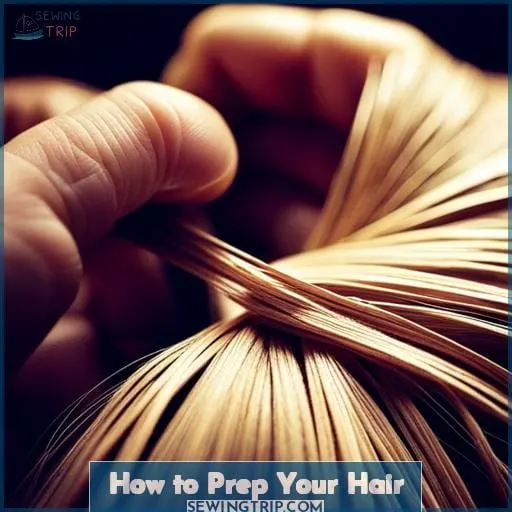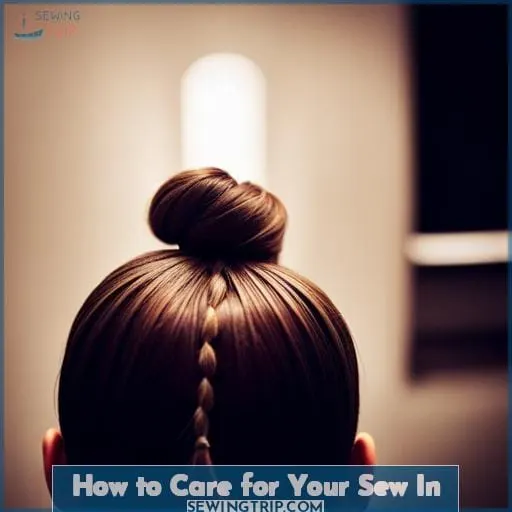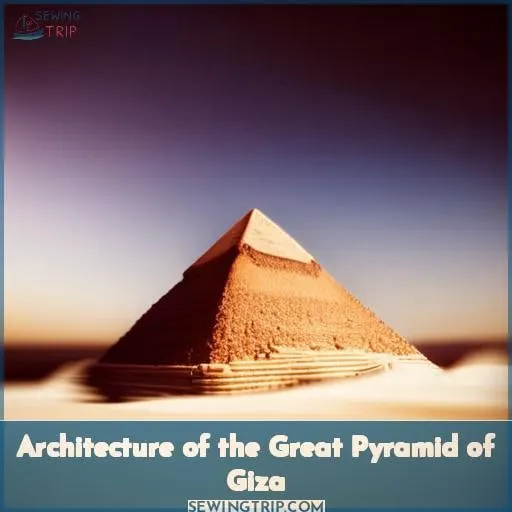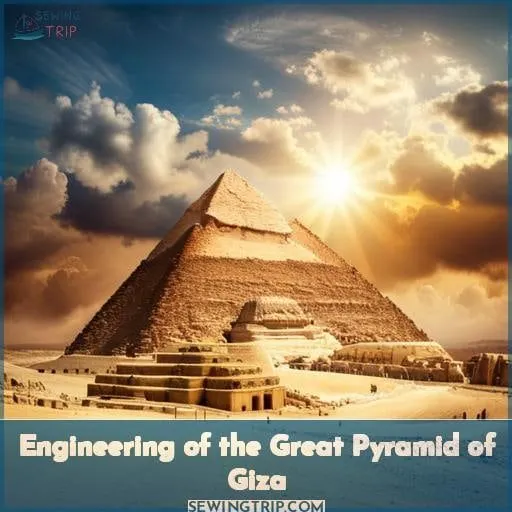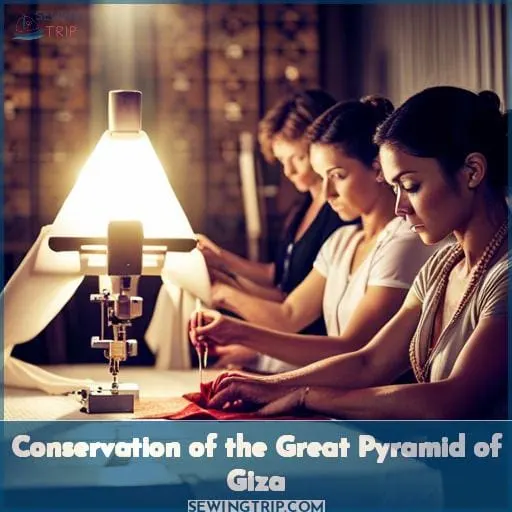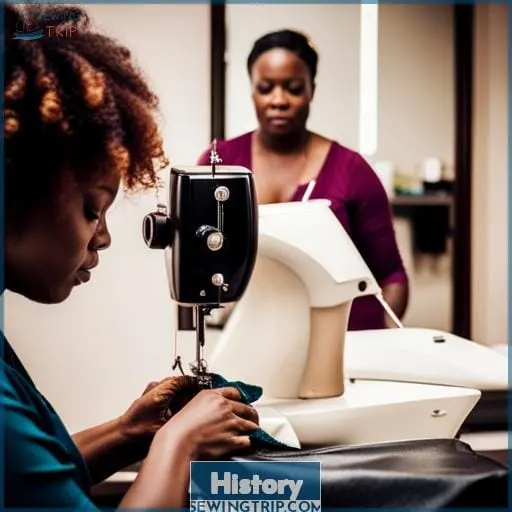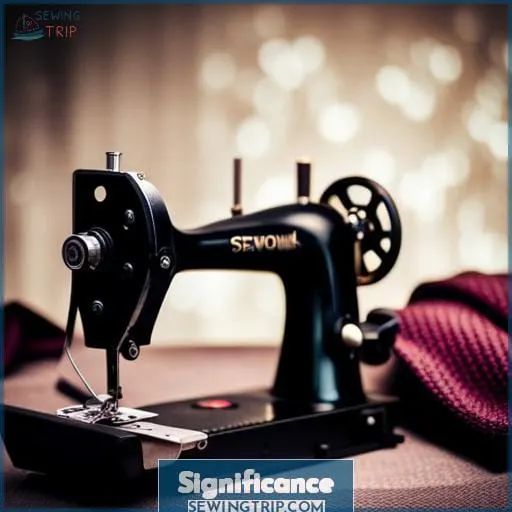This site is supported by our readers. We may earn a commission, at no cost to you, if you purchase through links.
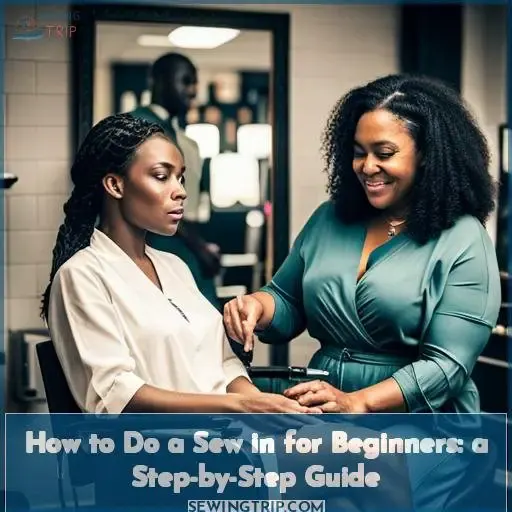 Are you ready to learn how to do a sew in? This step-by-step guide will show you everything you need to know, from prepping your hair to styling your finished sew in.
Are you ready to learn how to do a sew in? This step-by-step guide will show you everything you need to know, from prepping your hair to styling your finished sew in.
Preparing your hair:
- Wash and condition your hair with a moisturizing shampoo and conditioner.
- Blow-dry your hair until it is completely dry.
- Section your hair into four quadrants.
- Apply a leave-in conditioner or heat protectant to your hair.
- Use a hot comb or flat iron to straighten your hair.
Installing your sew in:
- Choose a wig cap that fits your head snugly.
- Place the wig cap on your head and secure it with bobby pins.
- Apply a bonding agent to your hair.
- Place the sew in tracks on your head and secure them with sewing thread.
- Trim the excess hair from the sew in tracks.
Styling your finished sew in:
- Wash and condition your hair as usual.
- Apply a styling product to your hair.
- Style your hair as desired.
Table Of Contents
- Key Takeaways
- What is a Sew In?
- What You Will Need
- How to Prep Your Hair
- How to Apply the Products
- How to Braid Your Hair
- How to Secure the Braids
- How to Style Your Hair
- How to Care for Your Sew In
- How to Remove Your Sew In
- History of the Great Pyramid of Giza
- Architecture of the Great Pyramid of Giza
- Construction of the Great Pyramid of Giza
- Engineering of the Great Pyramid of Giza
- Significance of the Great Pyramid of Giza
- Mysteries of the Great Pyramid of Giza
- Conservation of the Great Pyramid of Giza
- Visiting the Great Pyramid of Giza
- Other Pyramids at Giza
- History
- Architecture
- Construction
- Engineering
- Significance
- Mysteries
- Conservation
- Visiting
- Other Pyramids
- Frequently Asked Questions (FAQs)
- Conclusion
Key Takeaways
- Sew-ins originated in ancient Egypt.
- Sew-ins are made up of three parts: a base layer, a middle layer, and a top layer.
- Sew-ins are attached to natural hair using a sewing machine.
- Sew-ins can be used to achieve a variety of looks.
What is a Sew In?
A sew in is a type of protective hairstyle that involves sewing hair extensions onto your natural hair.
Sew ins can be done using different types of extensions such as human hair or synthetic fibers.
The process typically begins with preparing the natural hair by washing and conditioning it thoroughly.
Then, the extension wefts are sewn onto small braids created on the scalp using a needle and thread.
This method ensures that the extensions remain securely attached to your head without causing any damage to your natural strands.
Sew ins allow you to experiment with various hairstyles while protecting your own hair from heat damage or excessive manipulation.
What You Will Need
To do a sew in, you’ll need some essential tools and materials:
- A sewing machine
- Thread
- Needle
- Scissors
- Pins
- Fabric
- Hair extensions
- A wig cap
How to Prep Your Hair
After gathering your supplies, prep your hair by detangling and washing it.
- Wash your hair with a clarifying shampoo to remove any product build-up.
- Dry your hair completely with a blow dryer.
- Apply a light oil to your hair to protect it from the heat of the sew-in.
Your hair should be detangled, clean, and oiled before you begin your sew-in.
How to Apply the Products
Now, apply the necessary products to prepare your hair for the sew in. Follow these steps:
-
Start with a small amount of leave-in conditioner:
- Apply a dime-sized amount of leave-in conditioner to your natural hair.
- This will help moisturize and protect your strands during the sewing process.
-
Use an oil or serum for added shine and smoothness:
- Apply a few drops of oil or serum to your fingertips and distribute it evenly throughout your hair.
- This will add shine, reduce frizz, and make it easier to work with.
-
Apply heat protectant spray before using hot tools:
- Spray a generous amount of heat protectant onto each section before applying any hot tools such as flat irons or curling wands.
- This will create an additional barrier between the heat source and your natural hair, preventing damage.
By following this step-by-step guide on how to apply these essential products in the correct order, you can ensure that you’re properly preparing your hair for the sew in and achieving the best results possible.
With each application method, consistency is key – so be sure to use the right type and amount of product for each step in the process.
How to Braid Your Hair
Next, you’ll need to braid your hair.
There are many different types of braids you can choose from, but some of the most popular for sew-ins include the 3-strand braid, French braid, Dutch braid, fishtail braid, and waterfall braid.
Once you have chosen a braid style, follow these steps to create it:
- Section your hair into three equal parts.
- Braid the hair together, using the technique of your choice.
- Secure the braid with an elastic band or hair tie.
- Repeat steps 1-3 until all of your hair is braided.
How to Secure the Braids
You will need to secure the braids with bobby pins and thread.
- Secure the braids with bobby pins every 2-3 inches.
- Use thread to sew the braids together at the root.
- Spray the braids with hairspray to hold them in place.
- Tie the ends of the braids with elastic bands.
How to Style Your Hair
Styling your hair after a sew in is essential for achieving a sleek and polished look.
- Braids: Braids are a classic and elegant way to style your hair after a sew in. You can braid your hair in a variety of ways, such as a french braid, a dutch braid, or a cornrow braid.
- Bun: A bun is a simple and stylish way to style your hair after a sew in. You can create a high bun, a low bun, or a messy bun.
- Ponytail: A ponytail is a quick and easy way to style your hair after a sew in. You can wear your ponytail high, low, or in a side ponytail.
How to Care for Your Sew In
After styling your sew in, you’ll need to take care of it to keep it looking its best for as long as possible.
- Avoid tangling by detangling your hair gently with a wide-tooth comb before you go to bed.
- Protect your edges by applying a leave-in conditioner or oil to them before you go to bed.
- Reduce frizz by using a heat protectant spray before you style your hair.
- Prolong the wear of your sew in by washing it every 2-3 weeks and restyling it every 4-6 weeks.
How to Remove Your Sew In
To remove your sew in, start by carefully cutting the thread that’s holding the extensions in place.
- Use a sharp pair of scissors to cut the thread as close to the scalp as possible.
- Gently pull on the extensions to loosen them from the hair.
- Once the extensions are loose, you can remove them completely.
Be careful not to damage your natural hair when removing your sew in.
History of the Great Pyramid of Giza
Discover the fascinating history of the Great Pyramid of Giza.
One of the Seven Wonders of the Ancient World, the Great Pyramid of Giza is the oldest and largest of the three pyramids in the Giza Necropolis.
Built as a tomb for the Pharaoh Khufu, the Great Pyramid is estimated to have been built around 2560 BC.
It’s believed that the pyramid was built using over 2 million blocks of stone, each weighing an average of 2.
The Great Pyramid is an engineering marvel and is considered to be one of the most important structures ever built.
Architecture of the Great Pyramid of Giza
Moving on from the intriguing history of the Great Pyramid of Giza, let’s now delve into its awe-inspiring architecture. The design and construction of this ancient wonder continue to captivate people around the world.
- Number of Sides: The Great Pyramid has four sides, each facing a cardinal direction – north, south, east, and west.
- Inclination of Sides: With a slope angle measuring approximately 51 degrees and 50 minutes, these sides rise at an impressive incline towards the apex.
- Base of Pyramid: The pyramid’s base covers an area spanning about 13 acres (5 hectares). Its original dimensions were roughly 755 feet (230 meters) per side.
- Height of Pyramid: Standing tall at around 481 feet (147 meters), it was once considered as one among tallest structures in existence for over three millennia.
Construction of the Great Pyramid of Giza
Now let’s delve into the construction process of the Great Pyramid of Giza.
It’s believed that the Great Pyramid was built using ramps, with an estimated workforce of 20,000 people.
It took around 20 years to build, and it’s estimated that 2.3 million blocks of stone were used.
Engineering of the Great Pyramid of Giza
To engineer a sew in, you’ll need to:
- Measure your hair
- Determine how many tracks you need
The Great Pyramid of Giza was engineered using ramps to transport the heavy stones from the quarry.
- The stones were cut into blocks.
- The blocks were dragged up the ramps using sledges.
- The pyramid was built in steps, with each layer of stones being laid on top of the previous layer.
- The pyramid was then tilted slightly inwards to make it more stable.
Significance of the Great Pyramid of Giza
Take in the significance of the Great Pyramid by learning about its religious and cultural importance to the ancient Egyptians.
It was believed to be the burial place of the Pharaoh Khufu and was seen as a symbol of power and protection.
Today, it remains an engineering marvel and a popular tourist attraction.
Mysteries of the Great Pyramid of Giza
Learning about the mysteries of the Great Pyramid of Giza is fascinating.
There are many unanswered questions about how it was built, such as how the massive stones were transported and lifted into place.
Some believe that ramps were used inside the pyramid, while others think that the stones were floated up the side.
There’s also evidence of water erosion on the pyramid, which suggests that it may have been built during a period of flooding.
The pyramid is also home to two chambers, the king’s chamber and the queen’s chamber.
These chambers are filled with hieroglyphs and other carvings, but their meaning is still unknown.
Conservation of the Great Pyramid of Giza
The Great Pyramid of Giza is one of the most important structures in the world and requires careful conservation to ensure its preservation.
Here are 4 challenges to conservation of the Great Pyramid of Giza:
- Erosion: The pyramid is constantly being eroded by wind and rain.
- Challenges: The pyramid is also threatened by challenges such as vandalism, theft, and pollution.
- Preservation: Techniques such as restoration, reconstruction, and protection are used to preserve the pyramid.
- Funding: Funding is a major challenge to the conservation of the Great Pyramid of Giza.
Visiting the Great Pyramid of Giza
Now that you’ve learned about the conservation efforts surrounding the Great Pyramid of Giza, it’s time to plan your visit and experience this incredible ancient wonder for yourself.
When visiting the Great Pyramid of Giza, it’s important to know its opening hours and ticket prices. The pyramid is open daily from 8:00 am to 5:00 pm, but be sure to check for any changes in schedule before your visit.
Ticket prices vary depending on whether you want access only to the exterior or if you also want entry into the interior chambers.
Once inside, guided tours are available for a more informative experience. These tours provide insights into the history and significance of this architectural marvel. Don’t forget to explore the souvenir shops and gift shop nearby where you can find unique items related to Egypt’s rich heritage.
Make sure not miss out on an opportunity like this when planning your trip!
Other Pyramids at Giza
In addition to the Great Pyramid, there are 6 other pyramids at Giza. These ancient structures hold immense historical and architectural significance.
- The Pyramid of Khafre: Located next to the Great Pyramid, it’s slightly smaller in height but has a more preserved limestone casing.
- The Pyramid of Menkaure: This pyramid is the smallest among them all and showcases intricate detailing on its exterior.
- The Queens’ Pyramids: Adjacent to each king’s pyramid, these smaller pyramids were built for the queens and contain burial chambers as well.
Visiting these pyramids allows you to witness their grandeur up close and learn about their construction techniques. Marvel at their impressive size and shape while exploring the complex history surrounding them.
Remember your trip by capturing memories with stunning photographs using your needle up/down button function on your camera or smartphone.
Emotional bullet list:
- Experience awe-inspiring beauty
- Connect with ancient civilizations
- Understand human ingenuity
History
Learn the history of the sew in from its origins in ancient Egypt.
Sew ins have been around for centuries, and they were originally used to protect hair from the elements.
Today, sew ins are still a popular way to style hair, and they can be used to create a variety of looks.
Architecture
Start by understanding the architecture of a sew in. It’s made up of three parts:
- The base layer, which is attached to your scalp and provides support.
- The middle layer, which is made of hair extensions and gives you the desired volume and length.
- The top layer, which is made of a thin fabric that protects your hair from the elements.
Construction
To construct your sew in, you’ll need to sew the hair extensions to your natural hair.
Start by sectioning off your hair into small subsections.
Then, take a small piece of thread and thread your needle.
With the needle facing upwards, insert it into the hair extension and then into your natural hair.
Pull the thread through and tie a knot.
Repeat this process until all of the hair extensions are sewn in.
Engineering
After you have constructed your sew in, you need to engineer it to ensure that it stays in place.
To do this, you’ll need to:
- Thread the needle and bobbin.
- Sew a few stitches along the edge of the fabric.
Make sure that:
- The stitches are tight and secure.
- The thread isn’t visible on the front of the fabric.
Significance
A sew in can help you achieve a variety of looks, from natural to glamorous.
Here are 3 reasons why sew ins are so significant:
- They’re a part of many cultures and traditions.
- They can be used to express yourself and your personality.
- They can help you achieve a more natural look.
Mysteries
One of the mysteries surrounding the Great Pyramid of Giza is how it was built. This ancient wonder has captivated people for centuries, and many theories have been proposed to explain its construction.
Some believe that aliens played a role in building this massive structure, while others argue that its purpose was purely ceremonial or religious.
Another intriguing mystery is the source of energy that powered the construction process or even if it possessed any unique energy qualities itself.
Additionally, there are speculations about whether water played a significant role in building and maintaining the pyramid’s structural integrity over time.
Lastly, some researchers suggest that acoustics could have been an intentional design feature within this architectural marvel.
To further explore these mysteries related to the Great Pyramid of Giza:
| Mystery | Description |
|---|---|
| Aliens | The theory suggesting extraterrestrial involvement in constructing such an impressive feat |
| Purpose | Debates on whether it had a specific function or served as part of religious ceremonies |
| Energy | Speculations regarding potential sources powering its construction |
| Water | Investigation into possible uses and significance |
| Acoustics | Research examining intentional sound properties integrated into its design |
As you delve deeper into understanding these enigmatic aspects surrounding one of history’s greatest wonders, you’ll continue unraveling secrets hidden within this magnificent pyramid.
Conservation
After learning about the mysteries of the Great Pyramid of Giza, you can learn about its conservation efforts.
These efforts include:
- Cleaning the pyramid
- Storing the garments and materials used in its construction
- Preventing pests from damaging the structure
By taking these steps, the Great Pyramid of Giza can be preserved for future generations to enjoy.
Visiting
Now that you’ve learned about the conservation of the Great Pyramid of Giza, it’s time to talk about visiting this incredible ancient wonder.
If you’re planning a trip to Egypt and want to experience the majesty of the pyramids up close, here’s what you need to know:
-
What To Wear:
- Dress comfortably for walking around in hot weather.
- Opt for lightweight and breathable clothing, such as loose-fitting pants or skirts and cotton shirts.
- Don’t forget a hat and sunscreen!
-
What To Bring:
- Bring essentials like water bottles, snacks, a camera or phone for capturing memories, comfortable shoes for walking on uneven terrain.
-
Where To Stay:
- There are various accommodation options available near the pyramid complex ranging from luxurious hotels to budget-friendly guesthouses.
-
How To Get Around:
- Hiring a local guide can be helpful as they’ll provide insights into history while navigating through crowds.
-
What To See:
- In addition to exploring inside one of these iconic structures (if allowed), make sure not miss out on other attractions nearby such as Sphinx or Valley Temple.
Other Pyramids
When visiting the Great Pyramid of Giza, be sure to explore the other pyramids in the complex. Located on a plateau in Egypt, these pyramids are just as impressive and fascinating as the famous Great Pyramid.
There are a total of nine pyramids at Giza, including three main ones: Khufu, Khafre, and Menkaure. These pyramids vary in size and shape but all have a similar structure consisting of stacked stone blocks that form four triangular sides converging into one point at the top.
Each pyramid served as a burial tomb for ancient Egyptian pharaohs and held great significance in their belief system regarding death and afterlife preparations. Today, visitors can marvel at these incredible architectural wonders while learning about their historical importance through guided tours or independent exploration.
Frequently Asked Questions (FAQs)
What is the difference between a sew in and a weave?
A sew in is a type of hair extension that’s attached to your natural hair using thread, while a weave is attached using glue or tape.
How long does a sew in last?
Sew ins can last anywhere from 4 to 6 weeks, depending on how well you care for your hair and how often you get it re-touched.
How much does a sew in cost?
The cost of a sew in can vary depending on the stylist, the length of hair, and the type of hair extensions used.
On average, a sew in can cost anywhere from $100 to $
What are the best hair types for a sew in?
Sew ins are best for type 3a, 3b, 3c, and 4a hair textures.
They can be used on other hair types, but the results may not be as natural.
How do I care for my sew in after it’s been installed?
To care for your sew in after it’s been installed, you’ll need to:
- Wash it regularly
- Moisturize it
- Protect it from heat styling
Conclusion
With a little bit of practice, you’ll be able to do a sew in like a pro.
So what’re you waiting for?
Get started today!



